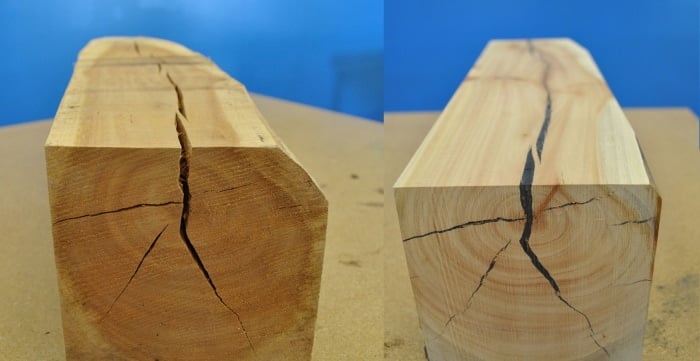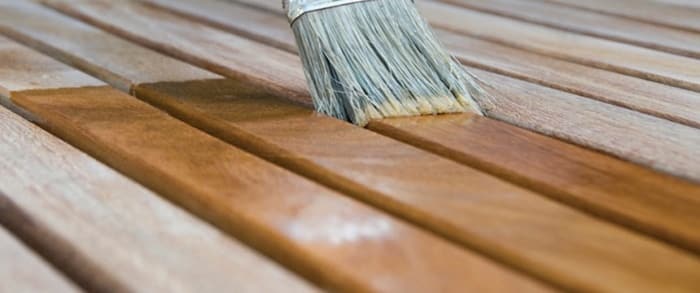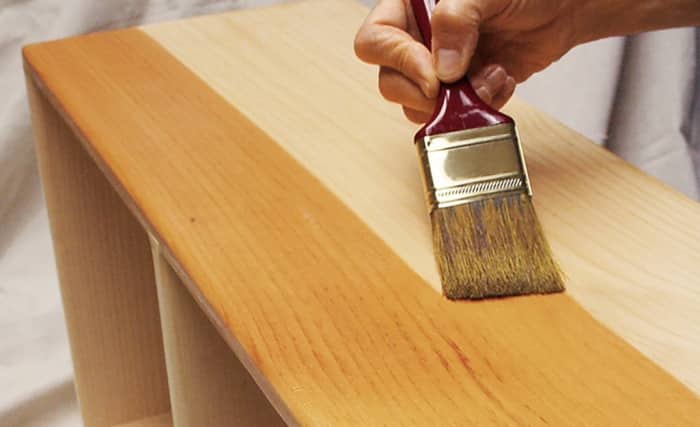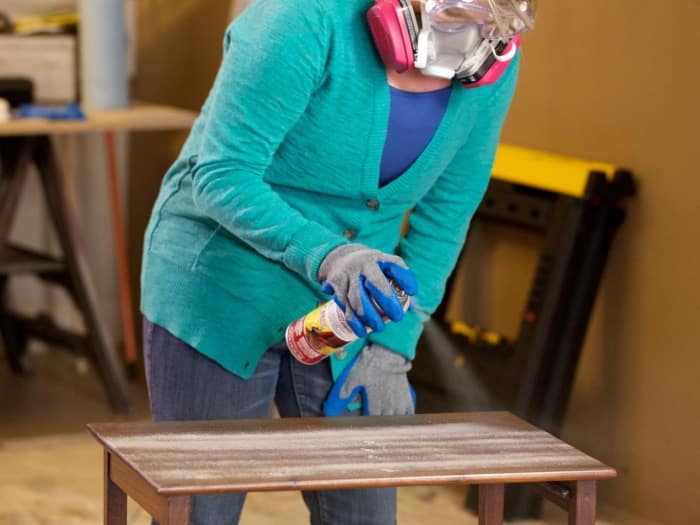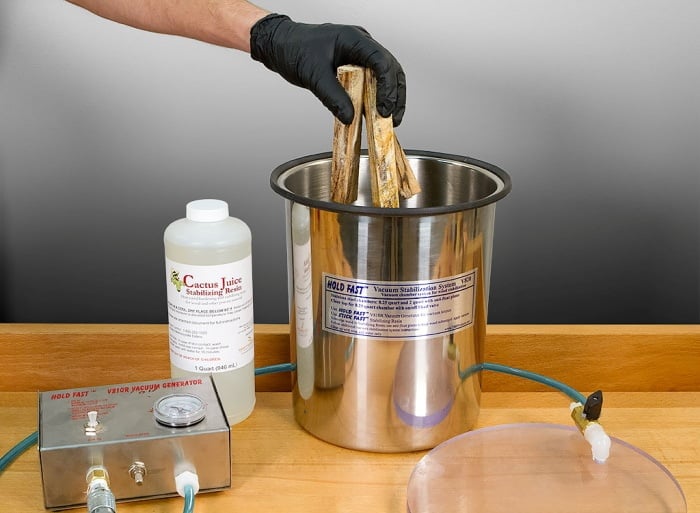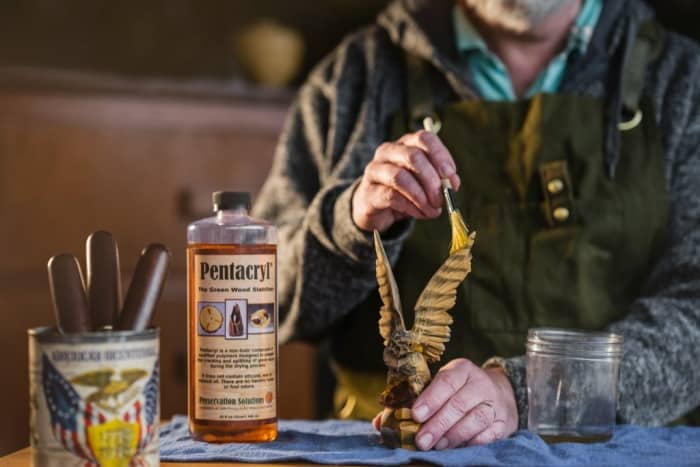Wood is a favorite interior material because it brings a sense of intimacy and connection to nature. However, this natural material is prone to degradation and cracking after a period of use.
Thus, wood needs careful care and regular maintenance. So keep reading on, and we’ll provide you with 3 simple ways on how to prevent green wood from splitting, which is DIY nature that anyone can follow.
What Causes Green Wood Splitting?
Wood splits and cracks due to moisture inside the wood. This moisture consists of bound water and free water. Bound water has hydrogen bonds inside the wood, so it doesn’t leave the wood quickly.
Meanwhile, the free water that exists in the wood capillaries is easily removed or absorbed.
Therefore, every time humidity and temperature change, the inner core of greenwood becomes wetter or drier. Then, when trying to rebalance, the wood splits and cracks.
The more water content in the wood, the more susceptible it is. Green wood is wood that has been freshly cut and hasn’t been dried or treated yet.
Because they have more than 50% water content inside, green wood is affected more quickly than other kinds of wood.
So, don’t panic when your green wood cracks, splits, or twists. These are natural and inevitable reactions of wood. But, unfortunately, you can only mitigate that effects.
With the wood drying process, you evaporate and reduce the moisture inside the wood to only 20% to prevent the wood from cracking easily.
But it’s an industrial process that requires high-tech machinery. So, in the next section, we’ll introduce simple methods that you can do at home.
3 Methods To Keep Green Wood From Splitting
The open ends of the log are the direct point of contact with the air and release moisture. The sealing material will prevent the wood from drying out and shrinking.
There are various kinds of materials. Here are the 3 most intuitive and effective ones (sort by material availability):
- Using salt paste
- Using varnish
- Using stabilizer
But before doing any of these methods, be sure to clean all debris and dust particles from the wood surface.
Method 1: Using Salt Paste
The simplest and most cost-effective method to combat wood splitting is to use salt paste. When applied to wood, it’ll prevent the wood from escaping moisture and cracking.
Tools and materials to prepare:
- Cool water
- Salt
- 3 eggs
- Cornstarch
- A paintbrushes
- A plastic bucket
Step 1: Prepare the salt mixture
Prepare a half bucket full of cool water.
Then, add the salt paste and mix well. Do it slowly so that the mixture reaches the right consistency, neither too liquid nor too hard.
Leave the solution at room temperature for about 4 hours.
Step 2: Add cornstarch
Add cornstarch to the mixture prepared in step 1. Do not add too much at once to prevent the mixture from hardening.
In case you overdo it, you can add more water immediately and stir well.
Step 3: Add eggs
Egg whites can soften and prevent flaking. Add the 3 egg whites to the mixture and stir until smooth.
Step 4: Apply the salt paste to the wood
Make sure the mixture covers the entire surface and avoid applying multiple layers.
Step 5: Leave the wood to dry
Leave the wood to dry in a warm area
With this method, you can refer to the following video tutorial:
Method 2: Using Varnish And Sealer
Another effective way to prevent green wood splitting is to use varnishes to reduce wood moisture loss.
Tools and materials to prepare:
- Bucket
- Warm water
- Spar varnish
- Aluminum paint
- Whitewood glue
- Paintbrush/Spray bottle
Step 1: Prepare the varnish
Pour in equal amounts of spar varnish and aluminum paint into your bucket and mix well.
Step 2: Mix the sealer
Warm water makes it easier for dissolution.
Pour equal amounts of warm water and white wood glue into the bucket and continue mixing.
Step 3: Apply the varnish
It’s best to use a brush to apply the varnish. Apply a thin layer of the solution to the top of the logs.
Repeat to make sure each end has 2 coats of varnish.
Step 4: Apply the sealer
Use a brush or spray bottle to apply the sealer on your wood. If you use a sprayer, use a 0.21”/0.55 mm or larger.
If your wood diameter is thicker than 24”/60 cm, double coat to achieve desired results.
Step 5: Leave the wood to dry
Leave the wood in a warm area until it’s dry.
Method 3: Using the stabilizer
Suppose you don’t want to spend too much time and meticulousness to prepare a solution like the 2 methods mentioned above.
In that case, you can find a convenient and ready-made stabilizer at any home appliance store. However, it would be best to use it with safety protection because it contains many toxic chemicals.
Tools and materials to prepare:
- A large container
- Rubber gloves
- Stabilizer
Step 1: Choose a suitable container
With this method, you should use containers made of plastic, fiberglass, or stainless steel to organize and store the wood. If you choose a metal one, it may discolor the wood.
Then you should clean the container thoroughly to remove all the dirt.
Step 2: Arrange the wood in the container
Place the small pieces of wood on the bottom, then arrange the larger pieces on top so that their sizes and positions are close together.
Try to match as accurately and as tightly as possible.
Step 3: Prepare the stabilizer
Follow the instruction of your purchased stabilizer strictly.
Note: You should wear gloves when using the stabilizer to protect your hands from coming into contact with the chemical.
Choose a pair of gloves that fit your hand completely to avoid jostling.
If the stabilizer accidentally gets on your skin, wash it immediately with soap and plenty of water.
Step 4: Apply the stabilizer
With green wood, you can soak them directly in the stabilizer.
Pour half of the stabilizer over the wood in the container. Make sure the solution covers every inch.
Then cover with cling film to prevent the solution from evaporating and ensure the wood has had enough time to absorb the solution.
Leave the wood in the container and stabilizer for at least 24 hours.
Step 5: Leave The Wood To Dry
Finally, you take the wood out of the container. Remove all stabilizer access. Let it dry naturally.
Pro-tips On How To Keep Wood From Splitting
If you are working with green wood and want to maintain its beauty during your project time, follow the tips below to prevent them from cracking.
1. Always Keep The Wood Moist
The most important and first thing to keep in mind is that you have to control the moisture content of the green wood.
Remember that when the outer layer of timber dries too quickly through evaporation while the inner layer is still wet, the wood will shrink and crack.
So you need to keep the wood moist from the outside during work.
- Use a spray bottle to moisten the surface of the wood. You can lightly spray on the piece of wood that is still in the carving process before you take a break.
- Cover the wood with a plastic bag when your working hours are over. It helps to evenly distribute the water balance of the wood, giving the wood time to move moisture from the inside to the dry outer layer of wood.
- Replace the new plastic bag regularly. The wood left in the plastic bag for a long time will produce mold and wood-infesting bacteria.
2. Choose The Right Type Of Wood From The Local Area
Prevention is better than cure. Since wood is susceptible to external influences, wood sourced from your local area will be the best wood to avoid cracking.
With this approach, you can get premium green wood for a meager price and with little chance of splitting.
- If you have a wood supply in place, harvest your own. In that way, you can ensure the wood quality and have the best chance of preventing greenwood cracks as early as possible.
- If you can’t harvest your greenwood, you should search and invest in your local lumber mill.
In addition, each type of wood has a different response to changes in the external environment and climate.
Therefore, it would help if you learned about different kinds of wood characteristics and then compare them with your project requirements to choose the most suitable wood.
3. Use the Wood As Soon As Possible
Greenwood is very supple and soft. To prevent it from separating, use it as soon as possible:
- Use green woods while they’re still fresh. The longer you wait, the more the greenwood will dry out and increase the risk of cracking.
- If it’s impossible to craft it right away, cut the wood into circles and lengthwise. Keep wood in plank shape instead of logs to retain moisture for longer.
- Keep wood away from fire, unnecessary heat, or direct sunlight.
- Avoid storing wood in the basement as its air can shorten the life and damage your wood.
Conclusion
Wood cracks due to loss of moisture, and it’s inevitable. However, there are 3 simple ways on how to prevent logs from splitting: salt paste, varnish, and stabilizer.
Before applying any methods, let’s take into account the availability of the required tools and materials. Then, you need to follow our basic steps in the tutorial and enjoy the results for many years.
In addition, we would recommend choosing the green wood from your local area and understand its properties.
Finally, remember to keep the wood in a warm place, away from direct light, and store the wood in a panel shape to minimize moisture loss.
Read more: How To Stop A Crack In Wood From Spreading?

